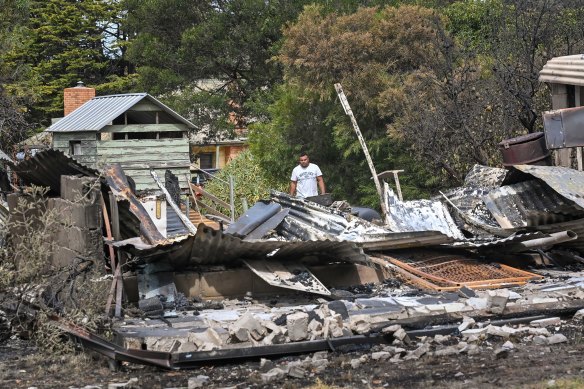
The average home insurance premium in NSW is $2946, up almost $400 on last year, while in Victoria, the average premium is now at $2075.
Loading
The most expensive premiums are in the Northern Territory ($4186) and Queensland ($3815) while the lowest are in Tasmania ($1781) and the ACT ($1833). The ACT is the only part of the country that does not impose a stamp duty on insurance premiums.
The largest number of people in insurance stress are in south-west Queensland, NSW’s Northern Rivers region centred on Lismore and regional Western Australia and Northern Territory.
Half of households in these areas face premiums that exceed a month’s income due to their risk of flooding or cyclone damage.
The jump in the proportion of people in stress would have been worse but for an increase in wages.
When the institute started measuring insurance affordability in 2022, about 10 per cent of households were found to be in financial trouble.
‘This is potentially a problem that’s bigger than just insurance. It’s also a problem for lenders, regulators and governments.’
Sharanjit Paddam, author of the Aucuaries Institute report
Paddam said while there were several factors behind the increase in insurance premiums, climate change was a key one that would not go away.
He said people were already paying for the impact of climate change through higher premiums because of a lift in the number of climate-induced natural disasters.
“With 15 per cent of households already facing affordability stress for home insurance, climate change is a problem here and now,” he said.
Loading
Higher insurance premiums encourage people to either ditch their insurance altogether or under-insure their properties.
The institute estimates that 5 per cent or 180,000 households with a mortgage are in insurance affordability stress. The average premium for these properties, which represent $57 billion in home loans, is $5216.
Up to 16 per cent of home loans in NSW’s northern rivers are at risk because of affordability stress from insurance, while in parts of Queensland and Western Australia between 8 and 12 per cent are at risk.
Lenders in Australia require borrowers to have their home insured to qualify for a mortgage. While this is traditionally verified when a loan is first taken, most lenders do not check the insurance on an ongoing basis.
Paddam said there were growing financial risks where lenders do not enforce insurance requirements on their borrowers or if people fail to increase their insurance to take account of higher rebuilding costs.

Residents whose homes have been damaged by bushfires could be under financial stress if they are not insured.Credit: Justin McManus
“If their home is damaged by a natural disaster and they either don’t have insurance or are under-insured, they could find themselves in a stressful financial situation,” he said.
“This is potentially a problem that’s bigger than just insurance. It’s also a problem for lenders, regulators and governments.”



























